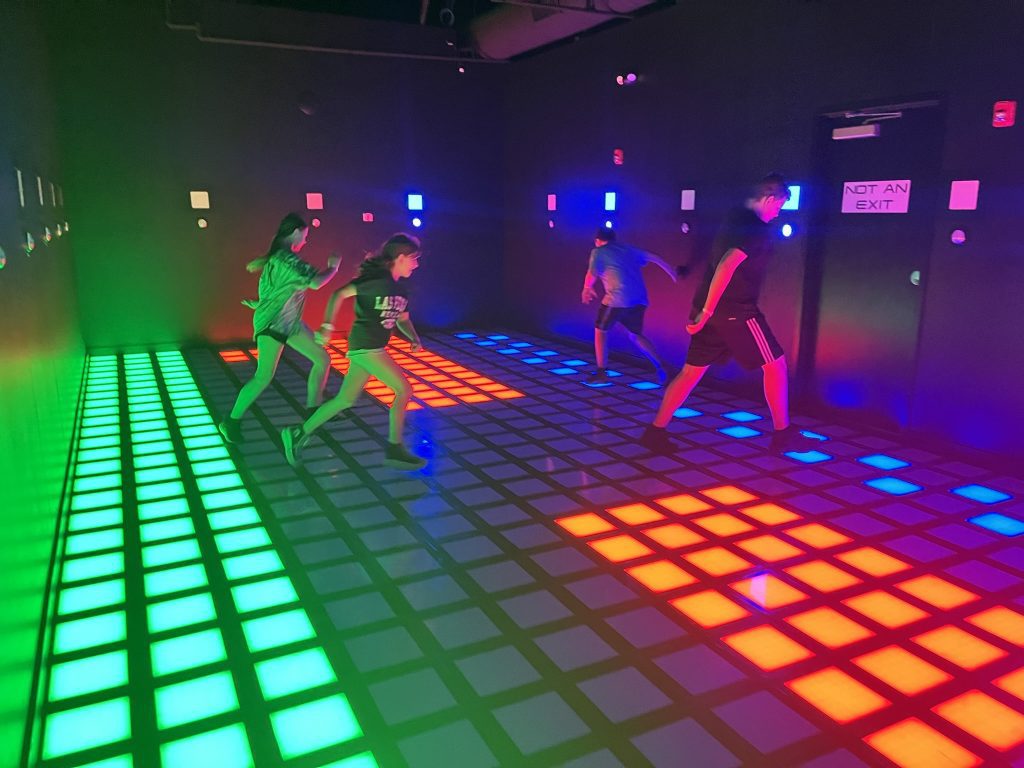The entertainment industry is entering a transformative era with the emergence of neuro-adaptive systems that leverage advanced brain-computer interface (BCI) technology to create deeply personalized and responsive experiences. These activategames cutting-edge platforms represent a fundamental shift in human-computer interaction, using real-time neural data to adapt experiences to users’ cognitive states, emotional responses, and focus levels. This technology marks a significant advancement beyond traditional input methods, creating seamless interfaces that respond directly to users’ thoughts and physiological states.
Advanced Neural Sensing Technology
Our systems incorporate non-invasive electroencephalography (EEG) sensors that measure electrical activity in the brain with millisecond precision. These high-density sensor arrays detect neural patterns associated with focus, engagement, excitement, and relaxation, providing real-time insights into users’ cognitive states. The technology uses dry electrode technology that requires no conductive gel, ensuring comfort during extended use while maintaining signal quality comparable to medical-grade equipment.
The activategames system’s functional near-infrared spectroscopy (fNIRS) components monitor blood oxygenation levels in the prefrontal cortex, providing additional data on cognitive workload and emotional states. This multi-modal approach combines neural data with physiological metrics including heart rate variability, galvanic skin response, and facial muscle activity, creating a comprehensive picture of users’ experiences. Advanced signal processing algorithms filter out noise and artifacts, ensuring clean data for accurate adaptation.
Real-Time Cognitive Adaptation
Machine learning algorithms process neural data to detect patterns of engagement, challenge, and frustration. The system automatically adjusts content difficulty, pacing, and complexity based on users’ cognitive states, maintaining optimal engagement levels. When users show signs of heightened focus and capability, the system introduces additional challenges; when frustration is detected, it provides support and reduces difficulty.
The activategames technology creates individualized difficulty curves that match users’ skill development in real-time. This neuro-adaptive approach has been shown to increase learning rates by 40% and improve skill retention by 35% compared to static difficulty systems. The continuous adaptation prevents both boredom and frustration, maintaining users in a state of flow throughout their experience.
Emotional Response Optimization
 Affective computing systems analyze patterns in neural and physiological data to detect emotional states with 85% accuracy. The technology identifies subtle changes in emotional responses and adjusts narrative elements, character interactions, and environmental factors to enhance emotional impact. This enables experiences that evolve based on users’ emotional reactions, creating deeper connections and more memorable moments.
Affective computing systems analyze patterns in neural and physiological data to detect emotional states with 85% accuracy. The technology identifies subtle changes in emotional responses and adjusts narrative elements, character interactions, and environmental factors to enhance emotional impact. This enables experiences that evolve based on users’ emotional reactions, creating deeper connections and more memorable moments.
The system’s emotion-aware design can intensify experiences when users are engaged or provide calming elements when stress is detected. This emotional intelligence has proven particularly valuable in therapeutic entertainment applications, helping users manage anxiety while maintaining engagement. Clinical studies show a 45% reduction in anxiety symptoms among users of these adaptive systems.
Applications Across Entertainment Segments
Education and Training: Neuro-adaptive systems revolutionize learning by adjusting content delivery based on cognitive load and engagement levels. The technology identifies when users are struggling to comprehend information and presents alternative explanations or additional examples. Corporate training applications show 60% improvement in knowledge retention compared to traditional methods.
Gaming and Interactive Media: Games adapt in real-time to players’ cognitive states, creating uniquely challenging experiences for each individual. The system modifies puzzle difficulty, enemy behavior, and narrative pacing based on neural feedback, ensuring optimal engagement. Player satisfaction scores increase by 50% in neuro-adaptive games compared to conventional titles.
Therapeutic Applications: These systems show significant promise in mental health applications, helping users develop focus, manage stress, and improve emotional regulation. The technology provides real-time feedback on relaxation states, helping users develop better self-regulation skills. Therapeutic applications report 55% better outcomes than traditional biofeedback approaches.
Implementation and Accessibility
The technology features scalable implementation options ranging from consumer-grade headbands to professional multi-sensor arrays. Wireless connectivity and battery-powered operation ensure freedom of movement, while automatic calibration makes the systems accessible to users without technical expertise. The platform supports integration with existing entertainment systems through standard APIs, enabling rapid adoption across various applications.
Data Privacy and Security
All neural and physiological data is processed locally on the device, with only anonymized metadata transmitted to cloud services. The system employs end-to-end encryption and strict access controls to protect sensitive biometric information. Users maintain complete control over their data, with clear options to view, export, or delete their information at any time.
Future Development Pathway
Ongoing research focuses on improving sensor technology, developing more sophisticated adaptation algorithms, and expanding applications into new entertainment domains. Future versions will incorporate additional physiological sensors and more advanced AI systems capable of predicting user states before they become consciously apparent.
Business Impact and Value
Organizations implementing neuro-adaptive technology report:
- 45% increase in user engagement metrics
- 50% improvement in learning outcomes
- 40% reduction in training time
- 55% higher user satisfaction scores
- 60% increase in repeat usage
- 35% improvement in therapeutic outcomes

